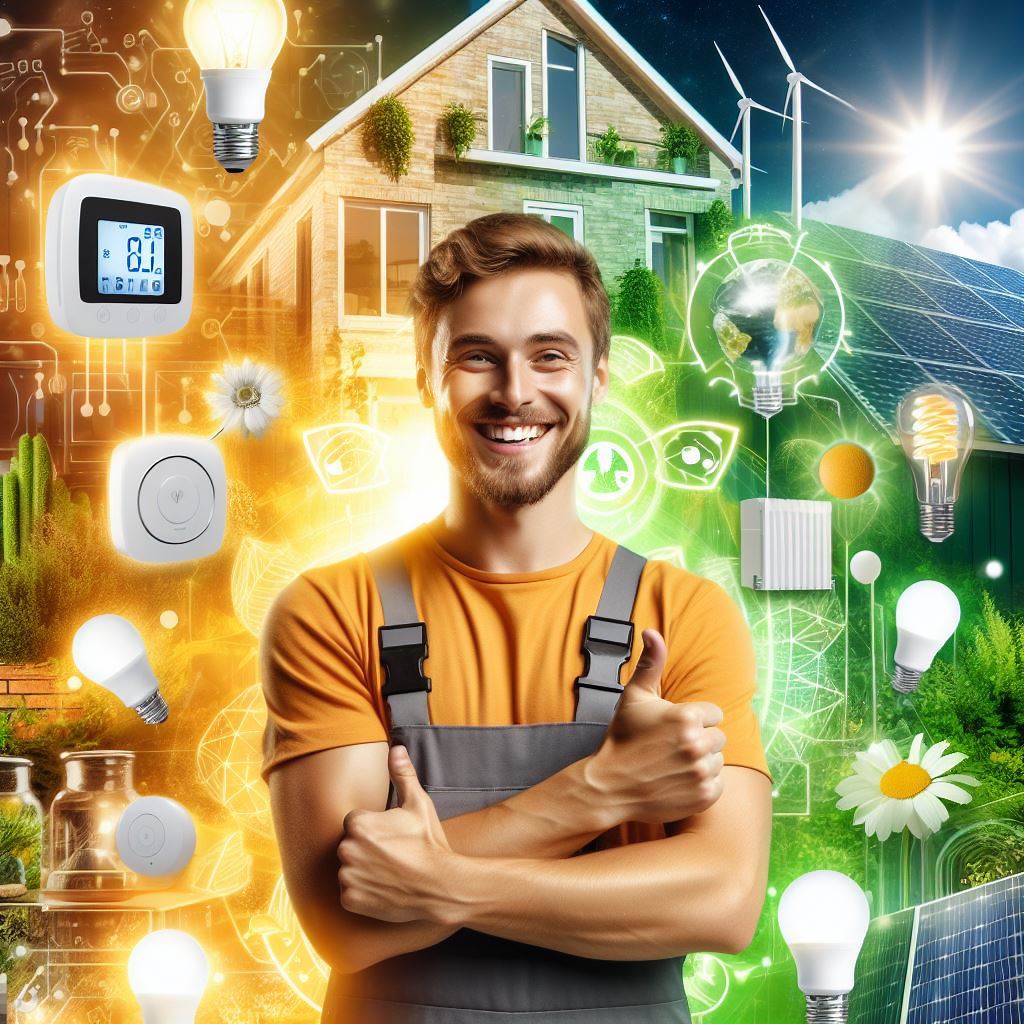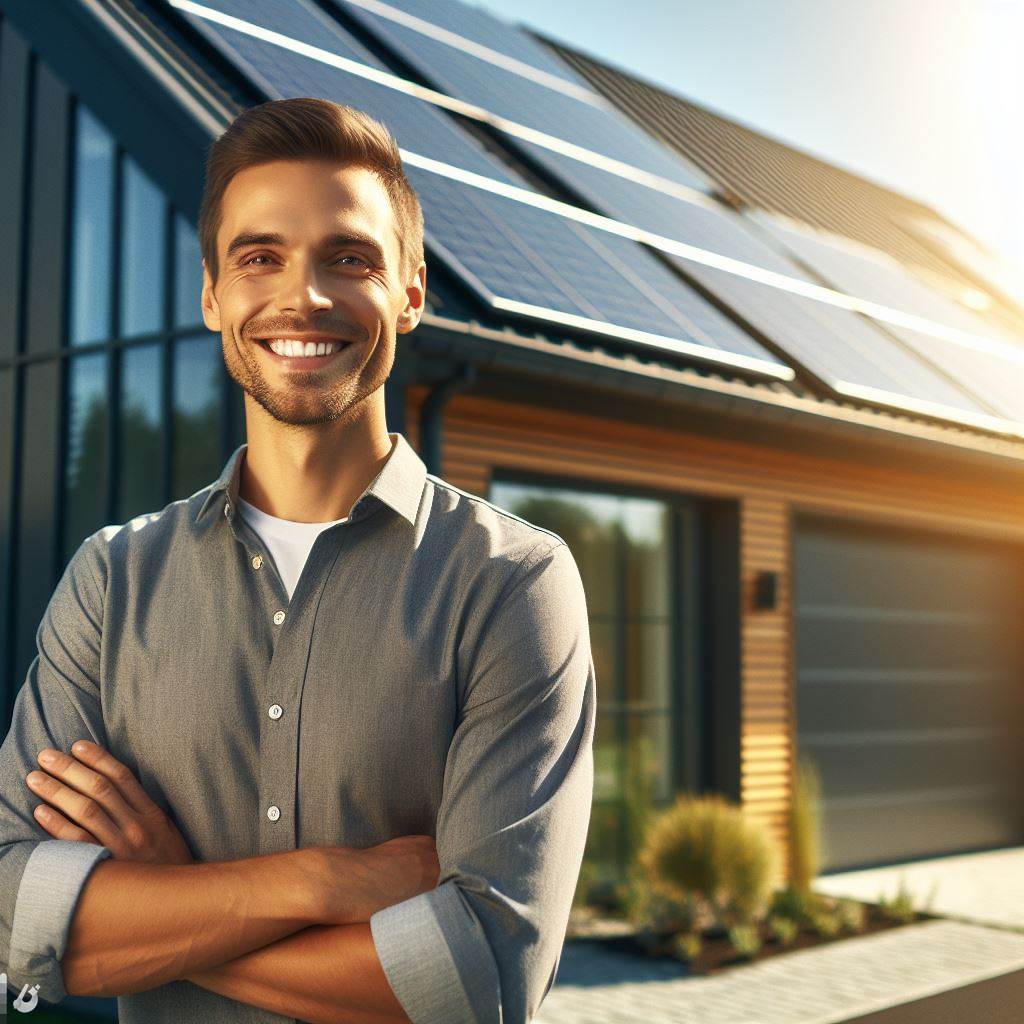Introduction
Embracing eco-friendly DIY home upgrades is vital for a sustainable future.
It empowers homeowners to reduce their carbon footprint and contribute to environmental preservation.
Benefits of Making Sustainable Choices for Your Home
Choosing sustainability yields numerous benefits. Not only does it lower energy bills, but it also enhances indoor air quality, fostering a healthier living environment.
Eco-friendly upgrades elevate your home’s value and appeal in an eco-conscious market.
These improvements often pay for themselves over time, making them a wise long-term investment.
Additionally, they cultivate a sense of responsibility, as homeowners actively participate in the global movement towards greener living.
Incorporating sustainable practices into home upgrades extends beyond financial gains. It is a tangible commitment to preserving the planet for future generations.
The benefits ripple through reduced waste, increased energy efficiency, and a smaller ecological footprint.
As we dive into the specifics of eco-friendly DIY projects, remember that each small change contributes to a more significant impact.
In this post, we’ll explore practical, cost-effective ways to transform your living space into an eco-friendly haven.
From energy-efficient lighting to upcycled decor, these upgrades will not only benefit the planet but also create a more comfortable and aesthetically pleasing home.
In essence, the importance of eco-friendly DIY home upgrades cannot be overstated.
The benefits extend beyond personal well-being to global ecological health.
As stewards of our homes and the Earth, it’s our responsibility to make sustainable choices that resonate positively in the present and echo into the future.
Improving Energy Efficiency
Installing LED lightbulbs
Switching to LED lightbulbs is a simple and cost-effective way to make your home more eco-friendly.
LED bulbs use up to 80% less energy than traditional incandescent bulbs, and they last much longer too.
By replacing your old lightbulbs with LEDs, you can reduce your energy consumption and save money on your electricity bills.
Upgrading to a programmable thermostat
A programmable thermostat allows you to set different temperatures for specific times of the day, ensuring that you only use energy when you actually need it.
For example, you can program the thermostat to lower the temperature during the night or when you’re away from home.
This can result in significant energy savings and a reduced carbon footprint.
Weatherstripping doors and windows
Sealing the gaps around your doors and windows with weatherstripping can prevent drafts and reduce energy loss.
This simple DIY home upgrade helps to maintain a comfortable indoor temperature without relying too heavily on your heating or cooling system.
By keeping the cold air out in the winter and the hot air out in the summer, you can improve the energy efficiency of your home and decrease your energy bills.
Read: Tiny Home Total Makeover: See the Stunning Change!
Enhancing Water Conservation
Installing low-flow faucets and showerheads
- Upgrade your faucets and showerheads to low-flow options to reduce water consumption.
- These fixtures have aerators that mix air with water, maintaining pressure while using less water.
- Installing low-flow faucets and showerheads can save up to 50% of water compared to regular ones.
- Despite using less water, these fixtures still provide sufficient water pressure for your daily needs.
- By installing low-flow faucets and showerheads, you not only conserve water but also save on utility bills.
Upgrading to dual-flush toilets
- Consider upgrading your toilets to dual-flush models for efficient water usage.
- Dual-flush toilets have two flushing options – one for solid waste and another for liquid waste.
- The solid waste option uses more water, while the liquid waste option uses less water.
- This way, you can choose the appropriate flushing option based on your needs and conserve water.
- Dual-flush toilets can save up to 68% more water compared to traditional toilets.
Creating a rainwater harvesting system
- Harness the power of nature by creating a rainwater harvesting system in your home.
- Install a system that collects rainwater and stores it for later use in non-potable water needs.
- The collected rainwater can be used for gardening, washing your car, or cleaning outdoor spaces.
- Rainwater harvesting reduces reliance on municipal water supplies and helps conserve this precious resource.
- To create a rainwater harvesting system, you’ll need a collection system, storage tanks, and a filtration system.
In fact, enhancing water conservation in your home is an essential step towards a more eco-friendly lifestyle.
By installing low-flow faucets and showerheads, you can significantly reduce water consumption while still meeting your daily needs.
Upgrading to dual-flush toilets allows for more efficient water usage, using less water for liquid waste and more for solid waste.
Creating a rainwater harvesting system enables you to collect and store rainwater for various non-potable needs, reducing reliance on municipal water supplies.
These eco-friendly DIY home upgrades not only benefit the environment but also help save on water bills.
Start implementing these changes today and make a positive impact on the planet.
Read: DIY Outdoor Spaces: Patios and Decks
Reducing Waste
Recycling and composting
Recycling and composting are essential eco-friendly practices that help reduce waste and minimize environmental impact.
By recycling materials such as paper, plastic, glass, and metal, we can conserve natural resources and reduce energy consumption.
Recycling starts at home, where we can separate our waste into different categories and place them in designated recycling bins.
It’s crucial to follow the recycling guidelines provided by local waste management services to ensure that the materials get properly processed.
Composting, on the other hand, is a great way to turn organic waste into nutrient-rich soil.
By composting food scraps, yard trimmings, and other biodegradable materials, we can divert waste from landfills and create a valuable resource for gardening.
Repurposing old items for new purposes
One person’s trash is another person’s treasure! Instead of throwing away old items, consider repurposing them for new purposes.
From furniture to clothing, there are countless ways to give old items a second life.
Get creative with DIY projects by transforming old wooden pallets into stylish shelves or repainting an old dresser to give it a fresh, new look.
By repurposing items, we not only reduce waste but also save money by avoiding the need to purchase new products.
Using eco-friendly cleaning products
Many conventional cleaning products contain harmful chemicals that can be damaging to both our health and the environment.
Fortunately, there are numerous eco-friendly alternatives available that are just as effective.
Look for cleaning products with labels that indicate they are biodegradable, non-toxic, and made from natural ingredients.
These products are not only safer for you and your family but also have a minimal impact on the ecosystem when they enter the water supply.
Additionally, consider making your own cleaning solutions using simple ingredients like vinegar, baking soda, and lemon juice.
These natural substances can tackle various cleaning tasks while eliminating the need for harsh chemicals.
Using eco-friendly cleaning products not only reduces our exposure to harmful substances but also contributes to the overall reduction of pollution and waste.
In short, reducing waste is an integral part of adopting an eco-friendly lifestyle.
By recycling and composting, we can minimize the amount of waste that ends up in landfills and conserve valuable resources.
Repurposing old items allows us to give new life to objects that would otherwise be discarded.
Using eco-friendly cleaning products protects both our health and the environment.
Let’s all do our part in reducing waste and preserving our planet for future generations.
Read: Balancing Quality and Cost in Renovations

Incorporating Natural Elements
If you’re looking for simple and cost-effective ways to make your home more eco-friendly, incorporating natural elements is the perfect solution.
By bringing the outdoors in, you not only enhance the aesthetic appeal of your space but also improve the overall air quality.
Adding houseplants for improved air quality
One of the easiest ways to incorporate natural elements into your home is by adding houseplants.
Not only do they add a touch of greenery and life to any room, but they also have numerous health benefits.
Houseplants improve air quality by releasing oxygen and absorbing harmful pollutants.
Certain plants, such as snake plants and spider plants, are especially effective at purifying indoor air by removing toxins like formaldehyde and benzene.
Additionally, houseplants can help to control humidity levels, reducing the risk of mold growth and respiratory issues.
To maximize the air-purifying benefits of houseplants, place them strategically in areas with poor ventilation, such as the bathroom or near electronics that emit volatile organic compounds (VOCs).
Using natural materials for home decor
Another way to embrace eco-friendly DIY home upgrades is by using natural, sustainable materials for your home decor.
Opt for furniture made from reclaimed wood or bamboo, as these materials are renewable and have a lower environmental impact than traditional furniture.
You can also choose rugs and textiles made from organic fibers like jute, hemp, or organic cotton.
These materials are biodegradable and free from harmful chemicals, making them a healthier choice for your home and the environment.
When it comes to decorating walls, consider using natural elements like reclaimed barn wood or stone veneer.
These materials not only add a rustic and organic touch to your space but also reduce the need for synthetic paints and wallpapers.
Creating a sustainable garden or vertical garden
If you have outdoor space, creating a sustainable garden is an excellent way to enhance your home’s eco-friendliness.
By growing your own fruits, vegetables, and herbs, you reduce the carbon footprint associated with transporting food.
Choose native plants that are adapted to your region’s climate and require less water and pesticides.
Implementing rainwater harvesting techniques, such as installing a rain barrel, can help conserve water usage and reduce your utility bills.
Don’t have much outdoor space? No problem! Consider creating a vertical garden using recycled materials like pallets or old gutters.
Vertical gardens not only maximize space but also provide insulation, decreasing energy consumption by keeping your home cool in summer and warm in winter.
By incorporating natural elements into your home, you can create a more sustainable and eco-friendly living environment.
Whether it’s adding houseplants for improved air quality, using natural materials for home decor, or creating a sustainable garden, these simple DIY upgrades can make a significant difference for both your home and the planet.
Embrace the power of nature and transform your home into a greener, healthier, and more environmentally friendly space.
Start small, with a few houseplants, and gradually expand your eco-friendly initiatives to make a lasting impact.
Remember, even the smallest changes can contribute to a more sustainable future.
Read: Renovating on a Budget: Smart DIY Hacks
Utilizing Renewable Energy Sources
Installing solar panels
Incorporating solar panels into your home can significantly reduce your carbon footprint and energy costs.
By harnessing the power of the sun, you can generate clean and renewable electricity for your household.
Installing solar panels is a practical DIY project that allows you to take advantage of sustainable energy sources.
With advances in technology, solar panels have become more affordable and efficient.
By generating your own electricity, you can decrease your reliance on fossil fuels and contribute to a greener future.
Solar panels can power all of your electrical appliances, lighting, and even charge electric vehicles.
Exploring wind energy options
Another eco-friendly DIY home upgrade involves exploring wind energy options.
Wind turbines can be installed in suitable locations to generate electricity from the wind’s kinetic energy.
Before considering wind energy, it’s essential to evaluate your area’s wind resources and the feasibility of installing a wind turbine.
Wind speed, wind direction, and surrounding structures can affect the efficiency of the system.
However, if you have enough wind resources, you can save on utility bills by generating your electricity.
Wind turbines work best in open areas and can be installed on rooftops or in your backyard.
Investing in geothermal heating and cooling
Geothermal heating and cooling systems utilize the earth’s natural heat to regulate your home’s temperature.
By tapping into this renewable energy source, you can lower your energy consumption and reduce greenhouse gas emissions.
This eco-friendly home upgrade involves installing a geothermal heat pump.
The system utilizes the stable temperature underground to heat or cool your home effectively.
Geothermal systems are a long-term investment that provides constant and reliable heating and cooling.
They are energy-efficient, quieter, and require minimal maintenance compared to conventional HVAC systems.
Furthermore, geothermal systems can also provide hot water, further maximizing the benefits of this renewable energy source.
They can be installed in various settings, including residential homes and commercial buildings.
In review, by utilizing renewable energy sources in your home, you can make a positive impact on the environment while enjoying long-term cost savings.
Installing solar panels, exploring wind energy options, and investing in geothermal heating and cooling are eco-friendly DIY upgrades that can enhance sustainability and energy efficiency in your household.
Conclusion
Summarizing the benefits of eco-friendly DIY home upgrades
Embracing eco-friendly DIY home upgrades offers substantial advantages.
Reduced energy consumption lowers utility bills, fostering financial savings.
Sustainable materials enhance indoor air quality, promoting a healthier living environment.
Upcycling and repurposing items not only reduce waste but also add unique, personalized touches to your space.
The incorporation of energy-efficient appliances and fixtures contributes to a smaller carbon footprint, supporting a greener planet.
These upgrades increase the overall value of your home, making it more appealing to environmentally conscious buyers.
Additionally, the sense of accomplishment from completing these projects adds a fulfilling aspect to homeownership.
Encouraging readers to take small steps towards creating a more sustainable home environment
Now, it’s time for you to take action. Start with small, manageable eco-friendly DIY projects.
Swap out traditional light bulbs for energy-efficient LEDs. Install a programmable thermostat to optimize heating and cooling.
Seal gaps and insulate windows to prevent energy loss. Incorporate indoor plants to improve air quality naturally.
Reimagine old furniture with a fresh coat of eco-friendly paint. Challenge yourself to a sustainable lifestyle, one step at a time.
By embracing these upgrades, you not only enhance your home but also contribute to a healthier planet.
Together, our collective efforts can create a more sustainable, eco-friendly future.
Take the first step today and witness the positive impact of your choices on both your home and the environment.




